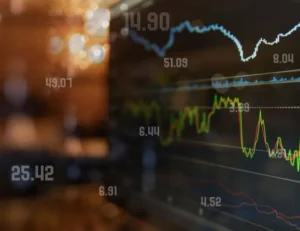According to Bloomberg Economics, China’s once-anticipated ascendancy to surpass the United States as the world’s largest economy has encountered significant headwinds and may never materialize as initially predicted. The previously touted timeline for China to assume global economic leadership, which suggested the early 2030s, has now been substantially delayed.
The underpinning factors contributing to this deceleration are multifaceted, encompassing a diminishing trust in the country’s economic prospects. This erosion of confidence is chiefly linked to the weakening real estate market and persistent economic management challenges faced by Beijing. The prospect of this waning trust becoming deeply entrenched poses a substantial threat to China’s long-term growth potential.
Economists are now revising their projections downward, estimating that China’s economic growth, as the world’s second-largest economy, is poised to decelerate to 3.5% by 2030 and an approximate 1% by 2050. These figures represent a notable departure from earlier forecasts that had pegged growth rates at 4.3% and 1.6%, respectively. The past year bore witness to China’s economy expanding at a mere 3%, marking one of the slowest growth rates in decades, primarily owing to pandemic-induced restrictions and a property market crisis.
In stark contrast, the United States appears to be demonstrating a remarkable degree of resilience, characterized by a robust labor market, substantial consumer expenditure, and moderated inflation. Notably, even Goldman Sachs Group has tempered concerns, reducing the probability of a U.S. recession from 20% to 15%. Bloomberg Economics projects a potential growth rate of 1.7% for the U.S. during the 2022-2023 period, with long-term projections indicating a gradual decline to 1.5% by 2050.
However, it is worth highlighting that China’s medium-term growth prospects continue to hinge upon its colossal economic size, substantial technological prowess, and unwavering government commitment to development objectives. Nevertheless, these growth drivers are currently operating with diminished vigor compared to earlier expectations.
As the global community reevaluates China’s evolving role, the United States and other member nations of the G7 are diligently scrutinizing structural challenges within the Asian giant. They view this moment as an opportunity to enhance the West’s position vis-à-vis a geopolitical competitor experiencing a period of vulnerability. Simultaneously, they remain cognizant of the cascading effects stemming from China’s economic slowdown, already evident in the fluctuations of commodity and equity markets.
Source: Bloomberg (Adaptation)







